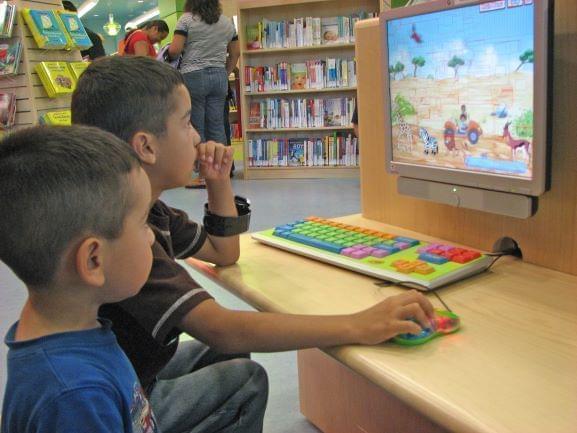What Caregivers Can Do With Kids Home From School Due To Coronavirus Closings

Elementary and secondary schools in Illinois are closed through at least March 30 to slow the spread of COVID-19, the illness caused by the novel coronavirus. The Illinois State Board of Education says those days won’t count toward student instruction.
Caregivers and parents can still provide educational instruction to children at home, however. Numerous online resources are available for free to families with internet access, and many school districts are sending home both digital and paper packets of educational activities.
Make a schedule
Even with these resources, Terri Sabol said having kids at home when they’re normally in school can feel overwhelming at times. Sabol is a professor at Northwestern University’s School of Education and Social Policy. Sabol’s advice to caregivers during this period: make a daily schedule with their children.
“Every morning have sort of a morning meeting and say, ‘OK so what’s our schedule going to look like today,” she said. “And then breaking up the day into chunks in ways that are sort of aligned with what kids would be doing in school (at that time) anyway.”
Sabol said the schedule provides a routine for children and can make sure caregivers get a break, too.

Terri Sabol
“Not all screen time is created equal,” she said. “But there are so many wonderful interactive activities out there that really are designed to promote the educational well being of students. And we know, at least for younger children, those tend to be better when they’re used with a caregiver, like with a parent sitting next to them actually interacting with them.”Sabol also recommends prioritizing interactive screen time over time spent passively watching TV.
Sabol suggests breaking up the day with activities like arts and crafts projects, children’s yoga and dance, or taking a walk in the neighborhood or backyard.
“I think everyday should have some sort of built in physical activity,” she said. “If you can take a nature walk and go observe things in the trees or go observe things in your neighborhood that’s safe, I think that is a good option.”
Talking to kids about the coronavirus
Sabol said kids are listening even if adults don’t think they are. It’s impossible to shield children from what’s happening in the world, so it’s important that caregivers give them honest and accurate information in kid-friendly language, she said.
“Don’t instill panic in your kids, but just be tempered and responsible and humane with your kid,” Sabol said.
Take time for yourself
Sabol emphasized the importance of self-care and timeouts for caregivers who are tasked with educating and entertaining their children while schools are closed due to the coronavirus.
“I think the best case scenario is that you have intense short periods where you are all in with your children, and then you also have intense periods where you are all in on yourself rather than the sort of murkiness… where you’re neither sort of caretaking for your child or caretaking for yourself,” she said.
Sabol said self-care looks different for different people; it could be taking a walk around the block or doing something that you love without children present.
She also recommends fortifying your support network.
“Social distancing does not mean social isolation,” Sabol said. “Whether it’s video calls, whether it’s texting, whatever it is, like staying connected with other adults who are in it with you. It is the time for social networks to be used to support us.”
Online learning resources for parents and guardians:
Khan Academy provides daily schedule templates for children ages 4 to 18. The site also provides interactive content for students in every grade level.
PBS for Parents has a weekday newsletter that includes tips and activities for at-home learning.
PBS Learning Media offers lesson plans, videos and interactive tools for free to students and teachers. Curriculum is organized by grade level.
https://www.pbslearningmedia.org/
Scholastic Learn at Home is a website with videos, articles and educational activities offered for free for students and their families.
https://classroommagazines.scholastic.com/support/learnathome.html
